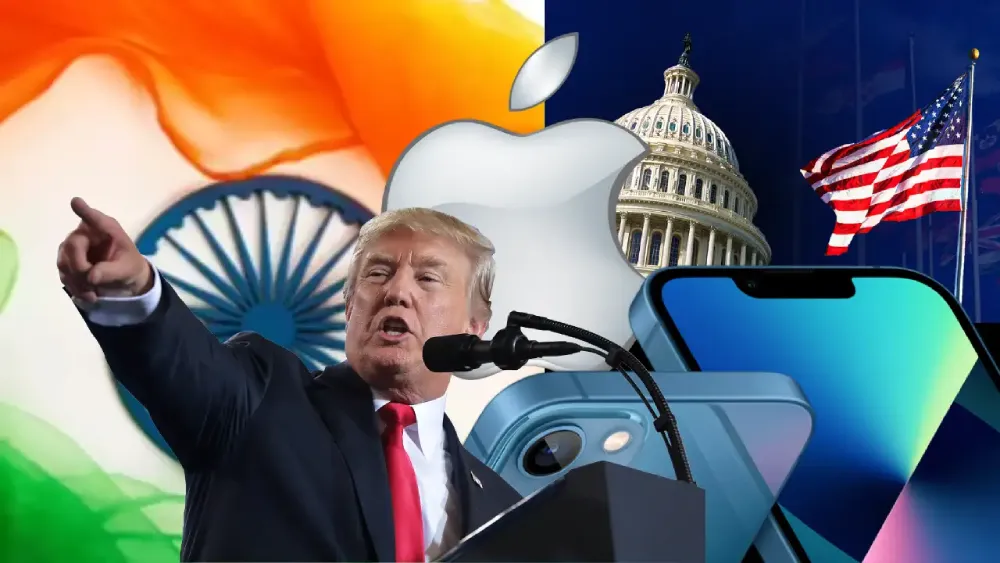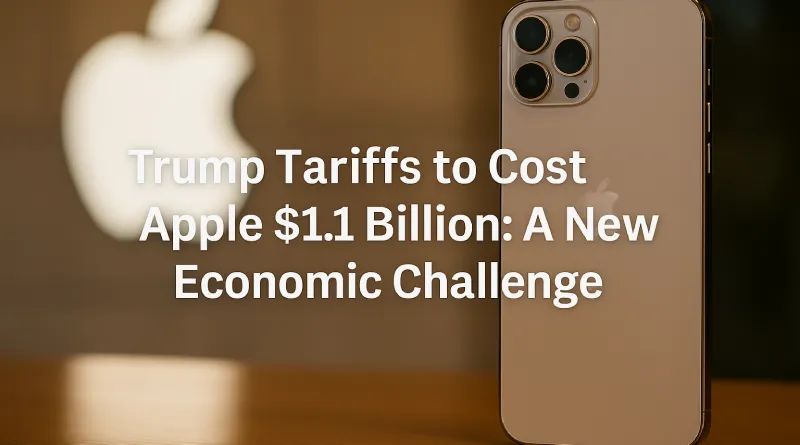Trump Tariffs to Cost Apple $1.1 Billion: A New Economic Challenge
Apple reported an upcoming tariff bill of a whopping 1.1 billion in the third quarter of July-September 2025, according to the company spokesperson Tim Cook. This comes after it had already paid this amount in the April-June period in response to the trade policies of U.S. President Donald Trump in the form of the International Emergency Economic Powers Act (IEEPA) tariffs on Chinese imports. These expenses are reduced compared to the May-forecasted $900 million and demonstrate that Apple has identified the strategic necessity of diversifying manufacturing, as most of the iPhones sold on U.S. territory are now assembled in India, and Macs, iPads, and Apple Watches are produced in Vietnam. All these notwithstanding, the efforts of Trump are currently putting forward the risk of even steeper iPhone tariffs, with the potential of 25 percent non-U.S.-based iPhones and pushing towards restructuring of the Apple international supply chain.
The strain on finances happens as the company performs strongly, with Apple recording its increase in fiscal third-quarter revenue by 10 percent to 94 billion dollars, mainly because of an increase in iPhone sales to 44.58 billion dollars of 13.5 percent, a high compared to the forecasted analyst expectations. Cook commented on what he called a pull-forward effect, that iPhone sales due to fear of increased tariffs added roughly 1 percent growth to the quarter. The said consumer behavior, which is exclusive to the American market, tends to raise local issues about possible increases of prices, particularly in high-tech states in which Apple Inc. is based, such as the State of California. But Cook warned that tariff rates will continue to be flexible, making it difficult to estimate his forecasts later on.

The trend of manufacturing in India and Vietnam allows Apple to avail itself of some costs, but there are still problems. Manufacturing the iPhones in the US as Trump requires may increase prices to 25% or more; analysts say that an iPhone made in the US may sell at 3,500 dollars versus 1,000 dollars now for an iPhone 16 Pro. This shift is not feasible in the short term due to higher costs of labor in the U.S. and intertwined supply chains of globally outsourced components. In the interim, the services business at Apple, such as the App Store and iCloud, increased 11.8 percent to 26.65 billion, a protection against tariff punishment against the hardware.
With tariffs remaking the trade world, the resilience of Apple is shown to be at stake. It will be important how the company manages to overcome these economic strains and be able to continue innovating in areas like improving service to include AI qualities like a personalized Siri. The imminent increase in the cost of goods and products to the consumers of the US, especially in technologically based areas, furthers the overall effects of trade wars on everyday technology.
Disclaimer
The information presented in this blog is derived from publicly available sources for general use, including any cited references. While we strive to mention credible sources whenever possible, Web Techneeq – Web Design Company in Mumbai does not guarantee the accuracy of the information provided in any way. This article is intended solely for general informational purposes. It should be understood that it does not constitute legal advice and does not aim to serve as such. If any individual(s) make decisions based on the information in this article without verifying the facts, we explicitly reject any liability that may arise as a result. We recommend that readers seek separate guidance regarding any specific information provided here.

